Results
-
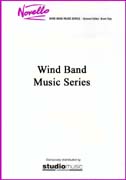 £214.95
£214.95JOURNEY THROUGH A JAPANESE LANDSCAPE (Percussion Solo with Concert Band - Score and Parts) - Musgrave, Thea
Concerto for Solo Marimba and Wind Orchestra. The four movements of Journey through a Japanese Landscape are based on a series of haiku which represents an emotional journey through the four seasons. The three haiku chosen for each of the seasons provide a setting and an event; thus, the gently undulating spring sea is the background for the free, improvisatory character of the skylark. The summer grasses have buried the glorious dreams of ancient warriors and after a violent storm, a distant memory of a march is heard. An autumnal fog envelops a colossal Buddha and a lonely watcher sounds one gong after another while a cricket acts as a grave keeper. Glass wind chimes introduce the frozen winter landscape. The march returns, then sleet and snow build to a big storm. Out of the silence that follows, echoes of the first movement suggest the return of spring and so, rebirth. (Grade 4) Duration: 23:00
Estimated dispatch 7-14 working days
-
 £49.95
£49.95JOURNEY THROUGH A JAPANESE LANDSCAPE (Percussion Solo with Concert Band - Score only) - Musgrave, Thea
Concerto for Solo Marimba and Wind Orchestra. The four movements of Journey through a Japanese Landscape are based on a series of haiku which represents an emotional journey through the four seasons. The three haiku chosen for each of the seasons provide a setting and an event; thus, the gently undulating spring sea is the background for the free, improvisatory character of the skylark. The summer grasses have buried the glorious dreams of ancient warriors and after a violent storm, a distant memory of a march is heard. An autumnal fog envelops a colossal Buddha and a lonely watcher sounds one gong after another while a cricket acts as a grave keeper. Glass wind chimes introduce the frozen winter landscape. The march returns, then sleet and snow build to a big storm. Out of the silence that follows, echoes of the first movement suggest the return of spring and so, rebirth. (Grade 4) Duration: 23:00
Estimated dispatch 7-14 working days
-
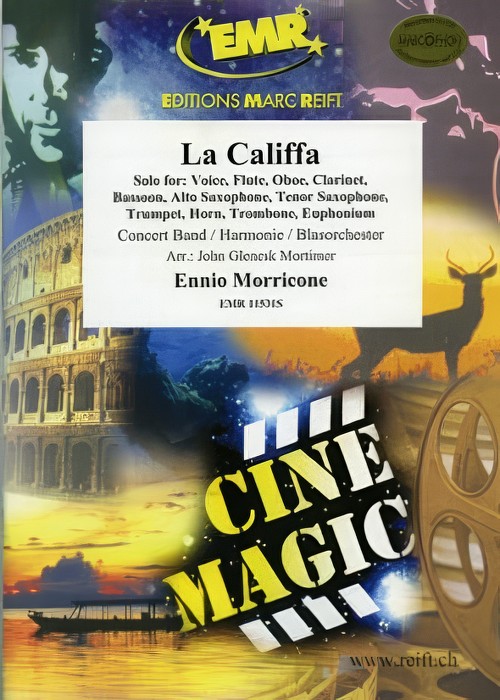 £115.00
£115.00La Califfa (Flexible Solo with Concert Band - Score and Parts) - Morricone, Ennio - Mortimer, John Glenesk
Solo for Voice, Flute, Oboe, Clarinet, Bassoon, Alto Saxophone, Tenor Saxophone, Trumpet, Horn, Trombone or EuphoniumDuration: 3.30
Estimated dispatch 7-14 working days
-
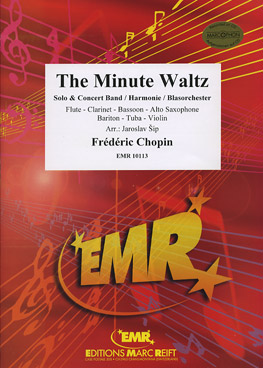 £84.00
£84.00MINUTE WALTZ, The (Flexible Solo with Advanced Concert Band) - Chopin, Frederic - Sip, Jaroslav
Solo for Flute, Clarinet, Basson, Alto Sax, Baritone, Tuba or Violin. Duration: 1:25
Estimated dispatch 7-14 working days
-
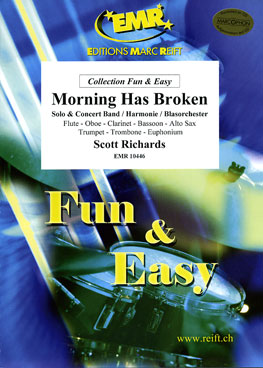 £77.00
£77.00MORNING HAS BROKEN (Flexible Solo with Easy Concert Band) - Richards, Scott
Solo for Flute, Oboe, Clarinet, Basson, Alto Sax, Trumpet, Trombone or Euphonium. Duration: 2:45
Estimated dispatch 7-14 working days
-
 £115.00
£115.00My Way (Flexible Solo with Concert Band - Score and Parts) - Francois & Revaux - Kadlec, Jirka
Solo for Flute, Clarinet, Soprano Saxophone, Alto Saxophone, Tenor Saxophone, Trumpet, Horn, Trombone, Euphonium, Violin, Viola or VioloncelloDuration: 3.45
Estimated dispatch 7-14 working days
-
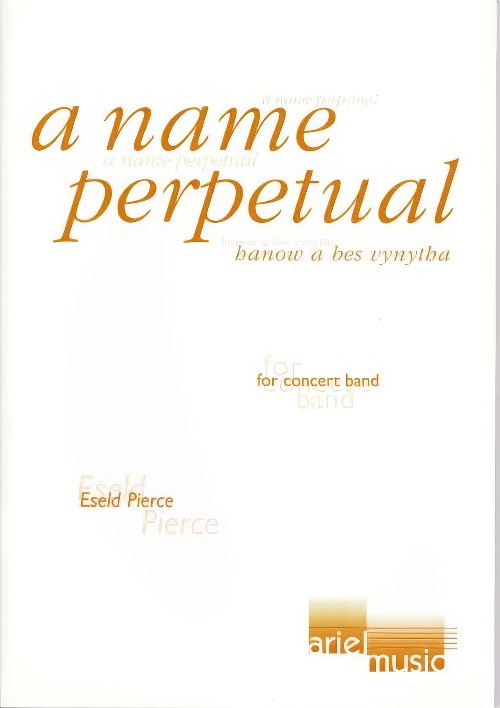 £115.00
£115.00NAME PERPETUAL, A (Concert Band) - Pierce, Eseld
Under the leadership of Michael An Gof and Thomas Flamanck, a Cornish host, sometimes estimated to number as many as 15,000, marched to London in protest against excessive taxation. Arriving at Blackheath, they were attacked by the King's army and defeated, and the two rebel leaders were hung, drawn and quartered. On his way to his death, An Gof stated that he would have "a name perpetual and a fame permanent and immortal". A Name Perpetual tells the story of the Rebellion in four connected scenes. The music includes strong elements of the Celtic music tradition, being structured around an old Cornish folk tune. The first scene introduces fragments of the folk theme and reflects the anguish of the Cornish people. The second scene opens with the folk theme on solo piccolo and, as different instruments enter one by one, the march is depicted with its accumulation of forces en route. The march halts suddenly as the Cornishmen discover the unexpected arrival of the English army and the subsequent music portrays the Blackheath Skirmish. In this scene the orchestra is divided into four parts, each working independently to create a sense of chaos, with the stronger elements of the brass and bass instruments representing the English, while the woodwind and saxophones represent the Cornish, struggling to sustain the folk tune throughout the battle. Eventually all the parts come together and the final section is a lament for the lost Cornishmen, fading away to leave only a haunting off-stage trumpet solo.
Estimated dispatch 7-14 working days
-
 £89.10
£89.10New River Suite (Concert Band - Score and Parts)
An uptempo introduction leads to the main theme which is presented by a solo Trumpet. The theme is restated in several different forms including an Alto Saxophone solo. Written in overture form, the middle section will show off your band's ability to play expressively. With a broad melody in the trumpets, this slow section moves to a dramatic finale.
Estimated dispatch 7-14 working days
-
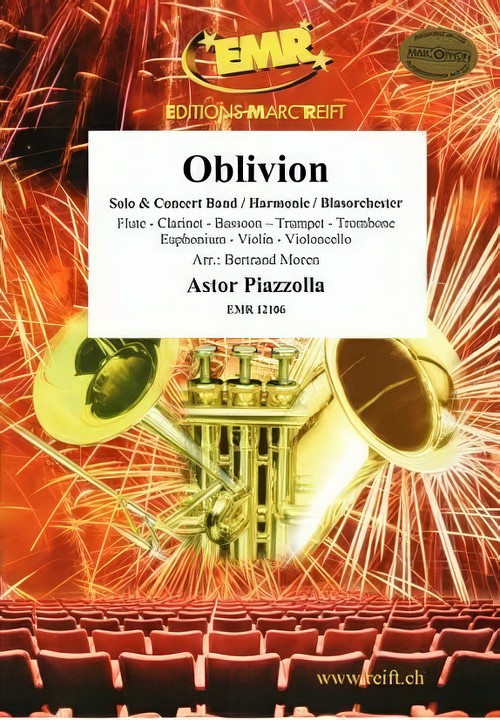 £115.00
£115.00Oblivion (Flexible Solo with Concert Band - Score and Parts) - Piazzolla, Astor - Moren, Bertrand
Solo for Flute, Clarinet, Bassoon, Trumpet, Trombone, Euphonium, Violin or VioloncelloDuration: 4.15
Estimated dispatch 7-14 working days
-
£64.95
PURCELL VARIANTS (Advanced Concert Band) - Meechan, Peter
Purcell Variants is based on Purcell's Queen Mary's Funeral Music, which consists of four canzonas, two elegies and an anthem. The first movement begins by sounding some of Purcell's original music in the trombones and horns, underpinned by a timpani roll with the woodwind articulating the beginnings and endings of the phrases. This leads into a cadenza for trumpet and alto saxophone before the movement heads in different directions, leading us to its mysterious end, where the original music is sounded this time in the 'stabs' of the clarinets and alto saxophone. Originally composed for the funeral of Queen Mary in 1695, Purcell's original funeral music was used later that same year for Purcell's own funeral - he died aged only 34. The second movement is an elegy, inspired by this story. After an introduction (a disjointed last post), the main melody of the movement is introduced by the solo euphonium, with other solo roles for flute, oboe and alto saxophone. This is then taken over by the trumpets who lead us into the middle section of the movement. This is a quasi funeral march, inspired by the image of Purcell's coffin being taken to its final resting point. The main melody returns in the flute, oboe and alto saxophone, this time more elaborated. The movement ends with a snare drum fading away - perhaps a metaphor. The Finale is a fast and furious movement combining thematic material from the two previous movements with new rhythmical ideas. This takes us through to the final passage - the triumphant return of Purcell's original theme. Duration: 13.00
Estimated dispatch 7-14 working days
